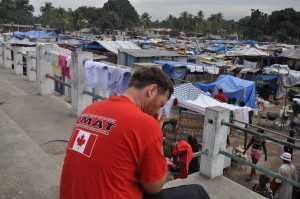Saturday, August 11, 2012 – At 16:53 local time on Saturday 11 August 2012, an earthquake with a magnitude of 6.4 on the Richter scale and at a depth of 9.9 km hit the Eastern Azerbaijan province of Iran. A second earthquake measuring 6.3 struck 11 minutes later at a similar depth north-east of the city of Tabriz. The earthquakes heavily impacted three cities of the province, Ahar, Heris and Varzaghan. The province has a total population of 3,691,270 with many of the affected spending the night outdoors in the open.
More than 60 aftershocks have been recorded and official sources indicate that 133 villages were heavily damaged (between 50% and 80%) and 12 were completely devastated. The death toll currently stands at 300 and the number of injured rose to 2006 with reports that the number could increase further to 3,000 or more.
According to government officials, as many as 92 relief teams (with more than 860 staff) were dispatched to the area by the NDMO, the Iran Red Crescent Society (IRCS) and neighboring provinces. These include 15 Search and Rescue (SAR) teams, 3 helicopters, 71 ambulances and 40 operational cars. As many as 12 life detectors have been made available. National authorities have not declared an emergency situation and have not requested international assistance.
CMAT continues to monitor.




